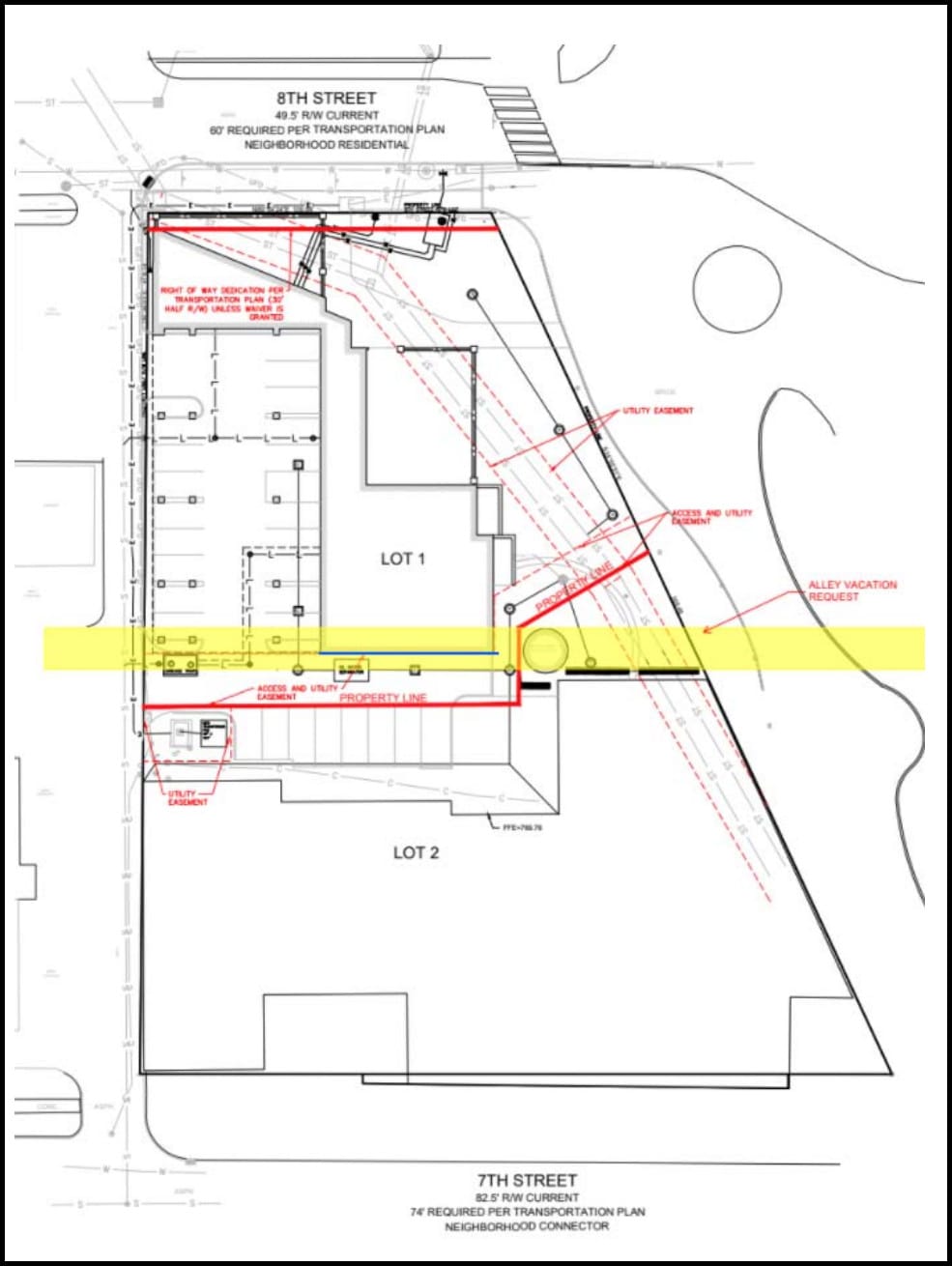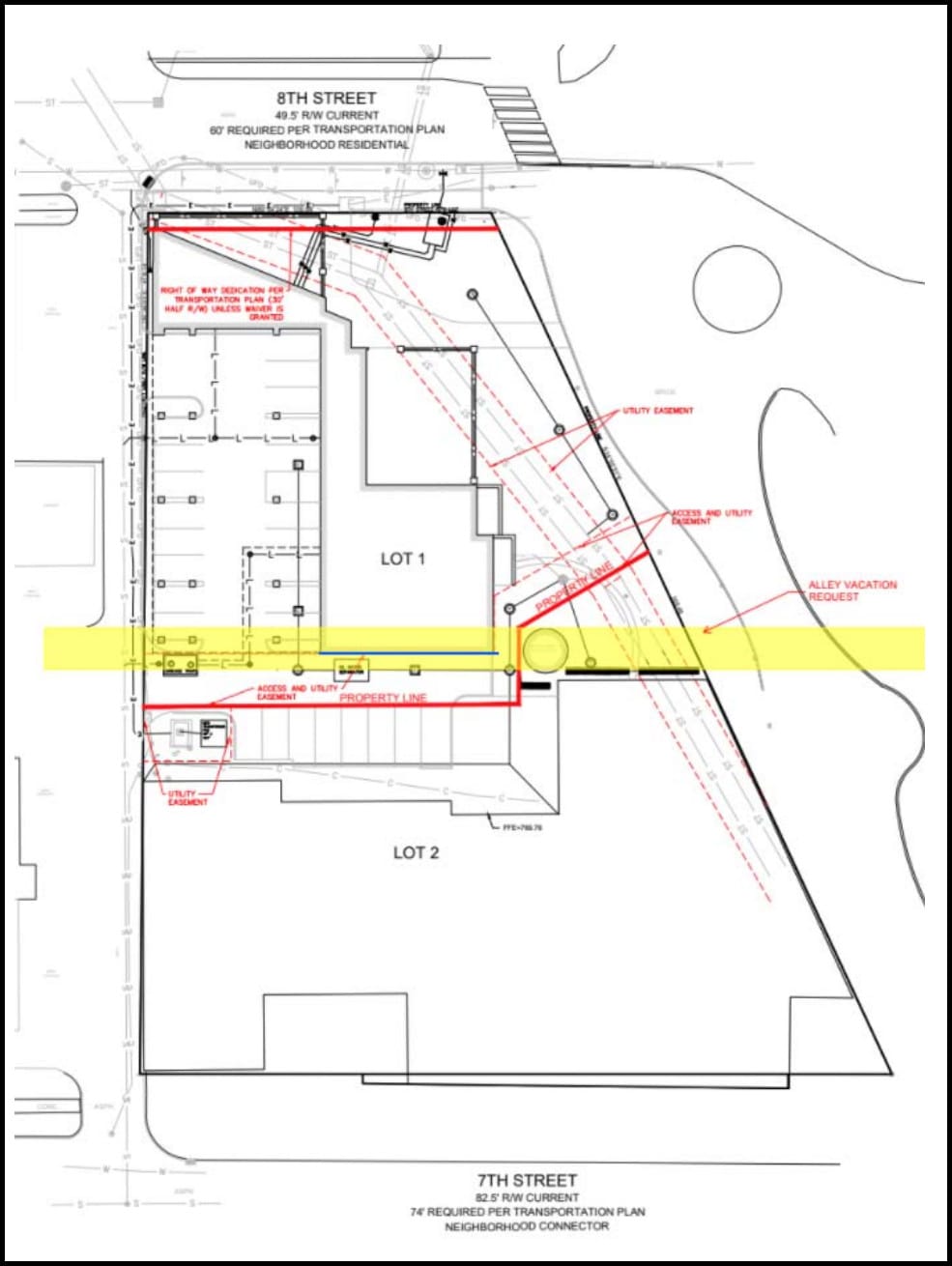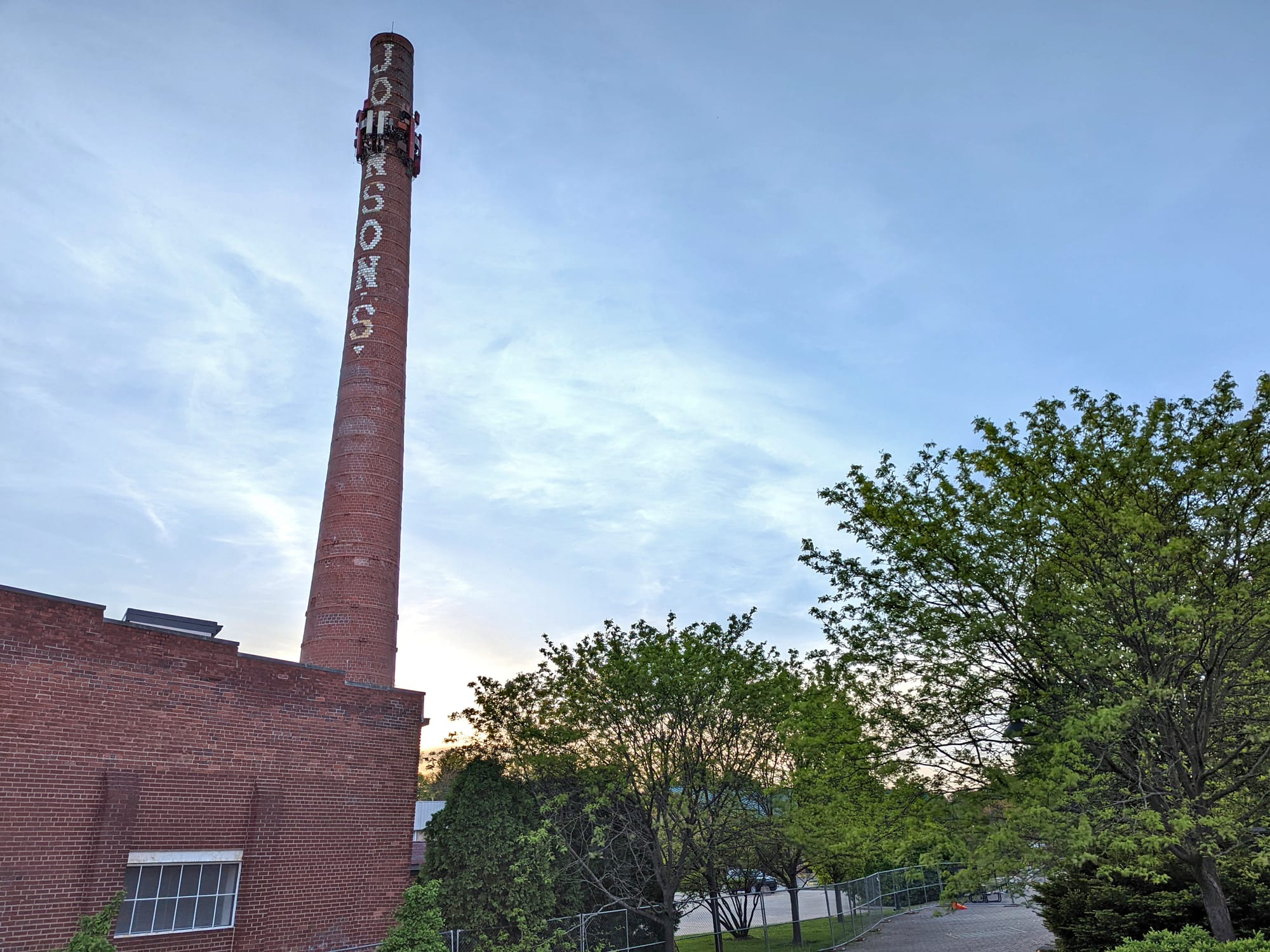Council defers to Johnson’s Creamery owner wish, delays alley vacation vote until after own vacation



At its Wednesday meeting this week, Bloomington’s city council was expected to vote on a request from Peerless Development to vacate an east-west alley on the Johnson’s Creamery building property off 7th Street.
A future housing development, based on its current design, depends on the vacation of the alley.
But the council voted to postpone its vote until July 20, which is the next scheduled regular city council meeting. The month-long gap in meetings reflects the council’s “summer recess”—its own seasonal vacation—on its annual schedule.
Vacating an alley means ceding to private ownership some land that is now public right-of-way.
It is the second time the council has postponed a vote on the question—the first occasion was on June 1. Both times, the request to postpone came at the request of Peerless.
Peerless wants additional time to explore its options with its title company and with the engineering firm that did a study of the 140-foot historic smokestack located in the middle of the alley.
The title company apparently failed to identify the existence of the alley in its review of the property in connection with the sale to Peerless. That meant Peerless had not factored in the public-right-of-way when it designed an apartment building to be constructed on the northern part of the parcel. The area is now used as a surface parking lot.
The housing development is supposed to include 51 apartments right next to the B-Line Trail, off 7th Street. Bloomington’s plan commission approved the site plan for the new development in October 2021.
Based on the engineering firm’s study, the city of Bloomington ordered Peerless to demolish the smokestack down to 60 feet—because of its structurally unsafe lean. That work won’t take place before August, because before the demolition can take place, AT&T needs to remove its communications equipment from the smokestack.
As a condition of vacating the alley, Bloomington mayor John Hamilton’s administration wants the city council to demand a $250,000 payment for the city to create a piece of artwork to commemorate the historic smokestack, after it is partly demolished. Earlier this year, the city council designated the building, including the smokestack, as its own historic district.
One of the arguments that Peerless made two weeks ago, when it argued against any payment for public art in connection with the alley vacation, was that such a cost was not considered as a part of its project budget.
Given that the title company appears to have missed the existence of the alley in its review of the property, Peerless is looking to recover some amount from its title insurance, which it might be able to use to make the public art contribution.
Peerless is also looking for other sources of money in connection with the smokestack. To help pay for the partial demolition, Peerless has applied for a $50,000 facade grant from the Bloomington urban enterprise association (BUEA). At the BUEA’s June 15 meeting, the item was tabled for further discussion.
The cost for the demolition has been estimated by Peerless to be around $350,000.




Comments ()